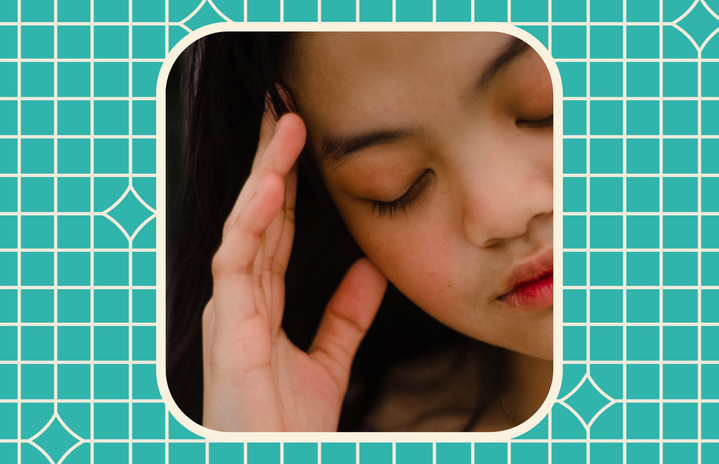Playing soccer for well over 12 years left me with three things: giant calf muscles, a healthy dislike for my high school soccer coach, and a lingering headache from hours (upon hours) of heading a soccer ball at practice. Despite the constant blows to my teammates’ heads day after day, concussions weren’t a topic of conversation. Sure, every so often someone would suffer a hard contact hit in the middle of a game and get put on rest for a week due to a “minor concussion,” but they’d return only to go through the whole thing over and over again.
In my 12 years of playing a contact sport — getting hit in the head several times a game, mind you — I had only one minor concussion that didn’t even stop me from playing on the pitch. But I’m certainly positive I had experienced more than that — girls’ soccer sees the second most concussions of all high school sports, according to The University of Pittsburgh Medical Center (UPMC).
A 2021 study in the Research in Sports Medicine journal revealed that the number of young female athletes treated for concussions has tripled in the last 20 years. Despite this, a 2022 study published in the British Journal of Sports Medicine reported that 80% of sports concussion research has focused on men. It was this gender gap that inspired CBS News correspondent Nikki Battiste and her team to dive deeper into this developing issue.
Battiste, who was a college field hockey player at The University of Pennsylvania, and a colleague (who was also a collegiate athlete) teamed up to learn more about the gender gap in concussion research. “We started to look into the studies that do exist about concussions and weren’t that surprised to find that there’s limited research about [concussions in] females,” Battiste tells Her Campus. “There have been many, many stories about male concussions, and I was even a little embarrassed that I hadn’t thought about women before, especially because I had been a female athlete.”
Concussions, however, do have a history of going unnoticed. According to UPMC, five in 10 concussions go unreported or undetected, and two in 10 high school athletes who play contact sports — including soccer and lacrosse — will get a concussion this year.
While larger internal signs of a concussion are easy to identify — like swelling of the brain and even internal bleeding — minor to moderate concussions are less likely to be diagnosed even with the help of an X-ray. CT scans, MRIs, and even neurological assessments can still overlook concussions, making it dangerous for athletes to continue playing after a hit to the head or body.
“No one can dispute a broken leg, a sprained ankle, or a broken nose, but people try to dispute a concussion because concussions are invisible [to the naked eye],” Battiste says. “Because of that, they’re harder to diagnose and can be questioned. No one knows your mind like you do, and that’s what’s tough.”
For her investigation, Battiste spoke to former U.S. Women’s Soccer goalkeeper and Olympic gold medalist Briana Scurry and former Stanford University volleyball player Hayley Hodson, both of whom suffered career-ending traumatic brain injuries.
Scurry’s career abruptly ended in 2010 after a member of the opposing team’s knee collided with her temple during a game. “When I was interviewing [Scurry], I asked her, ‘Do you think there’s a misperception that there couldn’t possibly be more concussions among women because women can’t play as hard as men?’ And she responded, ‘Well, yeah. That’s the problem, that people think that, and that’s just not the reality.’”
Hodson, however, was never able to make it to the professional league. As a top recruit, Hodson played volleyball at Stanford and had dreams of an Olympic medal. But all of that changed in 2015 when she was struck in the head by a volleyball on two separate occasions, leading to a career-ending brain injury.
“For Hayley, the issue was that she did say, ‘My head hurts’ [after her first hit].” Battiste explains. “They did determine she had a concussion, but then she was told to play again two weeks later, and so, a second concussion.”
Through her interviews with both athletes, Battiste observed that the better an athlete is, the more likely they’re told to just brush themselves off and head back onto the court or field. “It’s possible that at the top levels of play — we’re talking about the Olympics, USA teams, and Division 1 athletes — if you are one of the best players, it’s probably more likely that your coach, your team, and your trainer might force you back more quickly than you might be ready to come back,” Battiste says.
However, despite the lack of research as to why the gender gap exists for women’s concussions, Battiste is confident that the CBS News exclusive will draw more attention to this pressing issue. And, additionally, send a message to college athletes who play contact sports to keep their neurological health a top priority.
“If you feel like something is wrong in your head area, in your brain, do not play. Step off of the field, get help,” Battiste says. “Don’t let anyone make you think that — as some of these athletes were told — that you’re crazy. If you feel unwell or you feel like you took a hard hit, don’t second guess yourself. Ask for help and take a beat. The game will still be there.”




